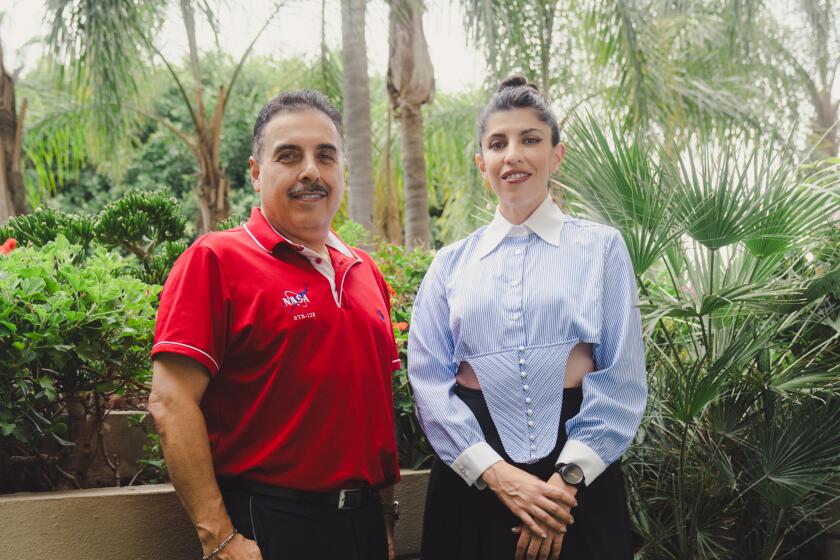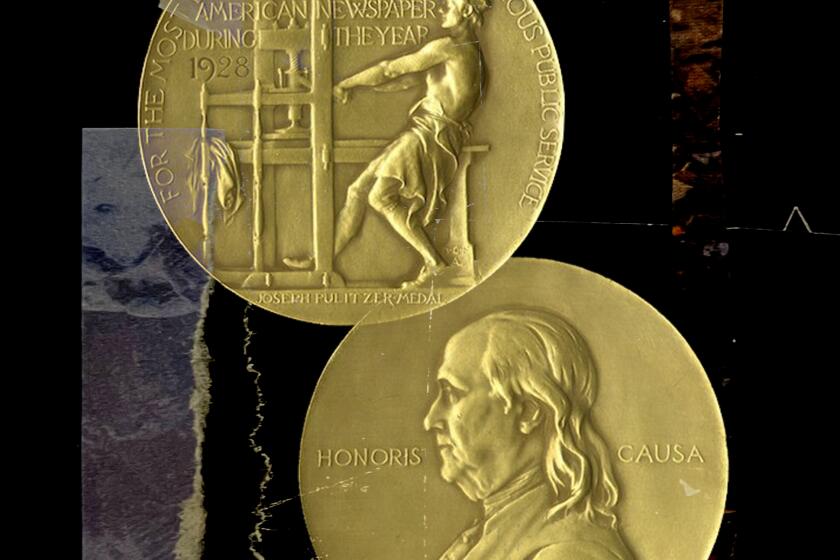
- Share via
Latina journalists have been at the forefront of Spanish-language TV for decades, bringing not only the news but representation to their communities. Now their contributions are being recognized with a new exhibit paying homage to seven Latina journalists who have become trailblazers in the field.
The exhibit, “¡De última hora! Latinas Report Breaking News,” which opened Sept. 15 and will remain open until May 2025, is a bilingual experience at the Smithsonian’s National Museum of American History.
Ilia Calderón, Dunia Elvir, Marilys Llanos, Gilda Mirós, Lori Montenegro, María Elena Salinas and Blanca Rosa Vílchez are the seven journalists featured in the exhibit. The women have become leaders in the world of Spanish-language TV because of their dedication to community-centered journalism.
‘A Million Miles Away’ shares the true story of NASA flight engineer José Hernández. Hernández was rejected by the NASA astronaut training program 11 times before being selected at the age of 41 in 2004.
The idea for the exhibit began with the museum’s project “Escuchame: The History of Spanish Language Broadcasting in the U.S.,” which collected around 100 oral histories that focused on the business of Spanish-language TV.
The project took about seven years to complete.
Exhibit co-curator, Melinda Machado, said that once the bilingual curatorial team saw all the material they had collected, the conversations for the exhibit seemed to focus on the reporters who were in front of the camera.
“Our thesis was that Latina journalists often write the first draft of history for their community,” Machado said.
When Spanish-language TV got its start in San Antonio, it broke barriers in newsrooms and continues to do so today. Latina journalists were often the first reporters on the scenes of major U.S. events.
In a sweeping reversal, the Pulitzer Prize Board will accept submissions from non-U.S. citizens but the change will not go into effect until 2025.
“We ended up organizing around seven women with seven distinct moments in American history,” Machado said.
Oftentimes they were put in dangerous environments, but they remained determined to tell important stories for their communities. Machado said these women had to adapt to the news they were covering at a moment’s notice. She said it was difficult to decide which women to feature.
“A lot of it came down to the objects and where they intersect and how museum audiences would be able to understand and relate to [news events] like going to Vietnam, covering the Black Lives Matter protests, covering immigration marches in L.A. and traveling to Mexico to interview Subcomandante Marcos,” Machado said.
For decades, the Olympic Auditorium was a hub for sports and entertainment in Southern California. A new interactive exhibit aims to preserve its history.
Spanish-language TV has reached more than just communities in the U.S., they have audiences throughout Latin America. Machado said the exhibit is aimed at empowering the Spanish-language community for its contributions for decades.
“I grew up watching Spanish-language TV and being able to bring the story to the nation at the Smithsonian really expands the story of Hispanics in the United States,” Machado said.
More to Read
The Latinx experience chronicled
Get the Latinx Files newsletter for stories that capture the multitudes within our communities.
You may occasionally receive promotional content from the Los Angeles Times.











